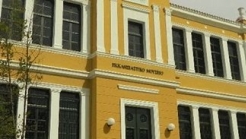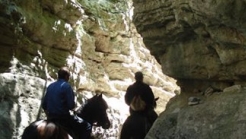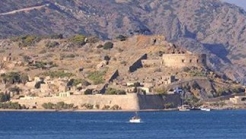

Greece
The Benaki Museum is a complex architectural composition, with an interesting history.The aim of the museum is the protection, preservation, and showcasing of the cultural heritage, as well as the connection of it to the modern social and scientific network.
The Benaki Museum is one of the great offerings that significantly improved the states value, while at the same time being one of the oldest museums in Greece.
With its mutli themed exhibitions, the Benaki Museum is a unique model of composite structure amongst the rest of the museums in Greece
The Benaki Museum is housed in one of the neoclassic buildings, holding up to the advance of the aesthetic degradation that characterizes the capital. It is in the center of the city, opposite to the National Park and the Presidential Park, and next to the Museud of Cycladitic Art and the Byzantine and Christian Museum.
The Benaki Museum is a complex architectural composition, with an interesting history.
The buildings
The new Cultural Center of the Benaki Museum is on number 138 of Pireos str., which is one of the main new axles of development of Athens.
The renovation of the existing building, which is laid out around an internal patio, has been possible thanks to the funding of the Ministry of Culture and the European Union.
The new building covers an area of 8.200 sq.m., with underground facilities of 2.800 sq.m. And an internal patio of 850 sq.m. The exhibition areas are 3.000 sq.m. Wide, the amphitheater can hold 300 persons, and there are rooms for the museum’s facilities.
The Islamic arts collections are housed in the neoclassic building complex dating to the beginning of the century, in the area of Kerameikos.
The building complex, on Agion Asomaton22 and Dipylou 12 streets, came to the ownership of the Benaki Museum following a donation from Lampros Eytaksias. This great donor, during the last times of his life, was the Honorary President of the Governing Committee of the Museum.
The building complex is comprised of two houses, one three storied and one two storied, which in 1989 were labeled as listed buildings concerning their facades. The Special Works department of the Ministry of Environment started in 1996 the restorative works for the foundations of the two buildings and their facades, following the architectural and static studies which were made on account of the Museum by architect P. Kalligas and civil engineer G. Spari.
The Historic Archives department has been moved to the house of the Delta family since 1994. Penelope Delta’s house in Kifissia, was built in the beginning of the 20th century. The building is an excellent sample of neoclassic architecture of the early 20th century, borrowing many morphological elements from medieval architecture. The inside is thrifty, with wooden facings, lacking although the complicated gypsum decorations of buildings of that period.
Another building is the Kouloura house. It is a distinctive neogothic building of the early 20th century, with symmetric towers and merlons, one of the few remaining at the suburbs of Athens. It is situated on a land of 1020,5 sq.m. On Poseidonos Avenue and Tritonos 2 in Paleo Faliro. The Kouloura house, according to the report for upgrading of the buildings of the Benaki Museum, was deemed as the most appropriate to house the games collection that was given to the museum by Maria Argyriadi in 1992.
The building of the gallery of Nikos Chatzikyriakos-Gkikas on Kriezotou 3 str, was owned by the famed painter Nikos Chatzikyriakos-Gkikas, and was given to the museum by the artist. The initial building was constructed on the order of alexandros Chatzikyriakos around 1932 by Constantinos Kitsikis, an architect and professor at the Technical University, and is a typical sample of an architecture house of the era.
In the middle of the 50’s, Nikos Chatzikyriakos-Gkikas decided to move permanently to the building that was owned by his family. For this reason, he added another floor, the layout of which he took upon himself, aided by his students in the Architectural School of the Technical University, Antonis Kitsikis and Alexandros Papageorgiou. The house on Kriezotou str was the center of vivid interest amongst architectural and art circles even in its’ time, and was displayed in Greek and foreign architectural magazines.
The specially made attic of the 6th floor housed his workshop and library, while the 5th floor was used as a residence. This is where he lived and created for 40 years, until his death, in September 1994. Those rooms are still preserved as he had organized them.
The Gallery remained closed since 2005 due to restorations of the buildings spaces, which were carried off by architect Pavlos Kalligas. After the completion of the works, the house, the workshop and the gallery of the artist remained as permanent exhibits; the rest of the space was given to promoting the spiritual and artistic creations in Greece in an extremely important era, from the end of WWI and the Great Fire of Smyrna, to the Dictatorship in 1967, an era when N. Chatzikyriakos Gkikas lived through and formed his artistic viewpoint.
The area that houses the workshop og Giannis Pappas is in the Zografou suburb, in a building that was the home of the great Greek artist’s family up to 1960.
This building, a unique example of a workshop of an artist so devoted to sculpting and painting, was given to the Benaki Museum by his son, Alekos Pappas. The object of the offer was to maintain the creations in their natural habitat. This workshop, according to the wish of the artist, will continue to serve as a workshop for the students of the School of Arts, while at the same time, through a minor expansion, the required storage space will be secured and the flow of visitors will be facilitated, according to the modern museological requirements.
Menti Offer – Initiative for the preservation of traditional arts.
The Menti offer is housed at an old artisanship on Polyfimou 6 str. The offer from Spiros, Marina and Othonas Mentis to the Benaki Museum, comprises of the entire lot of stored merchandise, as well as the machinery of the Menti threadmaking industry, one of the oldest ones. The business stopped operating in 2011, and the Menti family gave the building to the Benaki Museum to create an exhibition that would be a living museum-workshop. The place offers the visitor the chance to become familiar with the operation of a historic industry, watching all the stages of manufacturing silk and the creation of threaded works of art. At the same time, this place wishes to be a center for the preservation of traditional techniques related to the manufacture of threads, weaving and knitting. Apart from the presentation of the live manufacturing process, the Department of Tutoring Programmes of the Benaki museum cooperates with specialized artisans to organize lessons for adults on those traditional arts.
Training programmes
The training programmes are laid out for school teams of any levels, not larger than 30 persons. Preparatory material is sent on loan to the schools 15 days before the visit. The presentation, interactive and child centered, is carried out by museum teachers.
The programmes are specifically adjusted for people with special needs.
The school teams can visit the collections without belonging to an organized schedule. The teachers, aided by the material loaned, seminars and tutoting tours that are frequently organized by the department, can be prepared to present themselves the exhibits to their class.
Free visits, always of a predefined number of persons, can be made all around the year, following communication with the department of training programmes.
Training programmes for school teams are also carried out depending on the temporary exhibitions taking place.
The Benaki museum hosts objects representative of the entire span of Greek and international artistic creations, from the prehistoric times, to the most recent times. In the museum’s collections one can find more than 47.388 objects, 160.000 books, 1.000 files of historical documents, 217.715 photo negatives and 16.499 original prints, as well as 32 files of Neohellenic architecture.
The investigative orientations of the Benaki museum cover a wide array of fields of knowledge, from Cultural and Social sciences, to Information technologies. The aim of the museum is the protection, preservation, and showcasing of the cultural heritage, as well as the connection of it to the modern social and scientific network. This is why the museum maintains strong bonds with other institutes and renowned universities in Greece and abroad, thus contributing actively to the development of an interscientific dialogue, able to locate and assess objectively the modern social and cultural challenges.


The Alexandroupoli Ecclesiastical Museum houses the collection of ecclesiastic objects that were collected from the churches and monasteries of the Alexandroupoli Metropolis.


The canyon of Imvros is located at the prefecture of Chania, close to Sfakia .Spectacular, and with narrow passages, the canyon comprises of rocky formations. The wild flora is intense, ruling everywhere, with trees exploding literally out of rocks and stone.


The port of Spinalonga is situated on the northwest side of the gulf of Mirabello. On the entrance of the port, close to the Spinalonga peninsula, is where the skerry of the same name is located, entirely surrounded by a fort.
1039 Ε 6061 01515 00